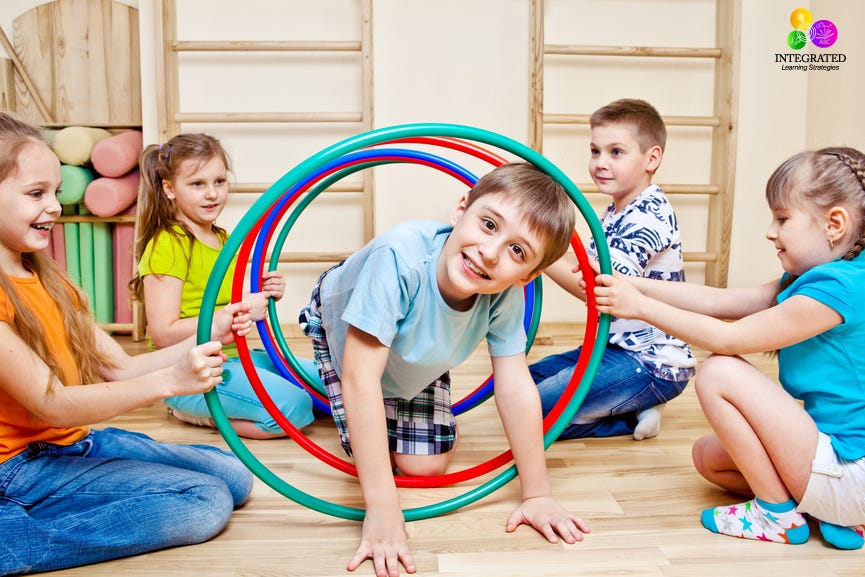What Does It Take to Know Your Child Well and Get the Best Out of Him/Her?

Rich family, poor family, black family, white family, no family is immune to challenges. Whether from our own family members or from external forces, the biggest challenge many families face is how to deal and resolve family problems amicably and relate to one another affectionately or in a more friendlier manner.
If you are a parent, you know that the journey of parenting starts with the arrival of your child into the world. From day one you have unequivocally interacted with this unique individual child, take time to learn about this child’s special qualities or traits-you are excited about your child, and your child is excited about you too as you both interact and get to know one another.
As days go by, you observe this child in various settings as he/she navigate the world around him/her. You start learning more and a lot about your child as your child reciprocate or remonstrate. You learn how you can better react and address your child’s world and continue to create a special bond; you probably have a vision and a mission about your family’s future-creating a strong and effective family- “the what family is all about”!
But sooner or later you realize that to create a strong and an effective family it requires more than observing, reading or teaching on daily basis, but more importantly, involving and doing it together.
And so, to get your child involved and do their part (whether jobs, homework, etc.) delightfully without countless reminders, verbal threats, and or bribes what parents should do more or do differently?
Parents are constantly get reminded of is these words of wisdom, “early teaching means early learning”, “parents have greater influence in their child’s life”, and, “true happiness comes from the quality of your relationship with your family”; yet to do these things for ourselves and for our children becomes the most daunting task for many parents.
Having a great conversation with our young children in this modern technological societies is becoming increasingly difficult and challenging task for many parents. The sea and the flow of information at their fingertips has enabled many things that contaminates their delicate growing brains/minds resulting them to growing up too fast as they find themselves engaging more and more into these media-initiated and targeted youth activities that are not suitable for their brains such as violence games that resulting to violent crimes, drinking problems, spread of opioid and marijuana usage, and the sexual activities at a very young age. Thus, the concept of “let children be children” (childhood) is being erased before our eyes.
How then can we bring back our children into a real conversation that we can understand them for who they are or who have become, i.e., as own unique people and guide them to grow well, learn, and become respectable and responsible citizens?
Thus, balancing between loving your children and disciplining your children without robbing them the freedom they need for their own growth while enabling them to experience the real journey of life that includes endurance, resiliency and genuine and realistic self-discovery that all children need to experience balanced life!
The answer to the above questions lies on the fact that it will take learning about yourself and your child to make it easy for you to parent your child better and get the best out of him/her, and here is how:
First, Know How My Children are Different from Me
Knowing yourself first, help you know about your child as well. To a large extent, our children are who we are! They have inherited our genes-the way we conduct ourselves, the way we live our lives, the way we nurture ourselves and our children shape the way they grow and learn.
As parents, we know the challenges in every stage of human development, and in every stage, we experience different social-emotional, cognitive, as well as physical development etc. and it’s from these experiences that make us unique individuals with different needs, and interests which will ultimately affect our paths to growth and development.
Like adults, children experience different emotions (stress, anger, frustrations, etc.) and have their own perspectives about their world. They have likes and dislikes, temperament types, and learning about how different they are from yours will help you understand your child better and know how to minimize the frictions between two of you-allowing things in moderation while building in skills that will eventually eliminate all that causing misunderstanding between you and your child.
Remember, if you are too rigid and strict it may backfire and cause unwanted behavior (defensive or rebellious attitude). Likewise, if you are too lenient and giving all the time, it sets the room for dependence, entitlement, and even laziness.
The most important thing you can give to your child especially in today’s world is your time with them.

Many studies show that parent-child time together has some lifelong benefits. Parents who read often to their child, sharing meals (meals time together), having one-on-one conversations more often on matters involving your child’s world, parents’ sensitivity towards your children’s needs and interests and parents taking interests on what matters the most in their children’s life.
Insensitive and selfish parents affect their children negatively, while parents who are sensitive towards their children’s needs and interests have a tremendous positive impact on their children; even by just witnessing their parents responding or worrying about their well-being, children notice, and this has a tremendously positive outcome on them.
“What inspires a child to grow up caring about others is the caring that the child receives.” (American Psychological Association, 2005).
So, as parents, we need to ask ourselves if we are doing enough for our children. Are we doing enough for our children to be watching us, not just listening to us!
Robert Fulghum once said, “Don’t worry that children never listen to you; worry that they are always watching you”.
The demands for parenting today are enormous! Parents are working long hours to be able to pay bills while leaving their children alone or in the hands of others/strangers. Finding quality parent-child time is challenging but it’s the most important piece of the puzzle that is missing in many families nowadays. It’s the quality parent-child time that brings the family together and into real and meaningful conversations.
Second, The Ways My Children Get My Attention
Children are naturally curious attention seekers (and so as some parents since they were once children, and probably never overgrew their curiosity to attention seeking part of their behavior) but knowing the limit is crucial because even the positive attention-seeking can become toxic and a behavior problem when exercised uncontrollably. Attention-seeking isn’t much different from manipulation, except that manipulation can also emerge from negative attention by both parents and children.
Many children misbehave to get attention which in turn use it to manipulate, hence discipline problems. Many parents also manipulate their children which create more behavior problems hence discipline problems. As we learn to give both carrots and sticks, we should remember these strategies that enable us to give only the “needed attention”. We must know the balance between how much attention children need and how much we can give. Be aware of when “need for attention” may turn to “demand for attention”!
I believe that parenting style of guiding your children does affect your children. It affects their personality and their approach to life, particularly, their moral compass, their emotional intelligence, level of self-esteem, how they manage anger and aggression, how they handle stress, their willingness to cooperate with others, whether they can take another person’s perspective, and their social skills.
Parents can teach more helpful behaviors by showing and modeling desired behaviors such as using words to express anger. Parents can also identify behavior that causing the problem (nagging, winning, belonging, etc.) and teach skills that would be more helpful for the child, e.g. asking for things or help in a normal voice/tone.
Acknowledging your child when your child does good, make effort, or demonstrate good behavior helps your child to remember that is an appropriate and acceptable way that can be repeated again-it boost your child’s morally. While we condemn bad behavior, we must be vigilant in acknowledging and praising good behaviors for it gives signals or cues for more constructive behaviors.
Giving a meaningful feedback to children also is crucial to managing children’s behaviors. Helpful information is critical to constructing skills and behavioral competencies. Good feedback can help children make good changes to some chronic behaviors.
Furthermore, make sure that your children don’t start seeing themselves through the eyes of those who don’t value them. Help your children realize how uniquely and precious they are and pay attention to the most important things that illuminate and amplify your children’s lives, because “no attention” at all is worse than positive and negative attention.
Third, Things My Children Likes or Loves (Personal likes/Needs Versus Your Likes/Needs)
Part of raising children well and supporting their needs that allows them healthy progression is not only to know who your children are but also, what your children like and loves! Your child may like or love music more than math for example, how are you going to either intervene and help your child to love both, and if that isn’t an option, how can you nurture and support the talents or the creativity your child wants to put into the music to thrive well in music while also helping him not to ignore and fail math completely?
There will be times when your child’s likes or loves conflict with what you would like your child to pursue instead. Understanding that it’s not all about you but rather about your child, knowing the differences and learning to address them creatively and constructively will not only save both of you from may parent-child frictions but will build-in strengths that you can both work on or count on.
I have seen it with my own children, for example, I get so frustrated when I see them not studying hard enough, and I will lecture them how they should study and even draw a comparison from how I studied during my time in school, to how they are studying now, which in my mind (not in their mind) isn’t good enough or hard enough! And they will always respond, “but we haven’t performed poorly”! And of course, I will rebuttal, “but you could perform extraordinarily if only you could study a little harder, adopt a better or a different study-style and or study-plan, I may also go above and beyond to what they needed at a time; I will add variety of study materials on the study area etc. with the intention to influence them to follow my suggestions”.
Yes, I might amplify the need to take learning seriously simply by talking “how to” and even by providing supporting materials but the ultimate decision is theirs, especially if they prove to be where they are expected to be, whether performing well academically or performing other roles in their own style and get things done!
We become effective and better supportive when we can afford our children an environment which is conducive to growth and learning-provide tools and materials for learning effectively with the hope that such environment will inspire and motivate them in their learning. And perhaps, that is the best way to nurture what they might need and like to support their talents and creativity in their studies than constantly lecturing them about what works and what doesn’t work when we are two different individuals and in a different period.
Remember, a lasting and solid mutual friendship is based on identifying the likes and the dislikes.
Four, Special Challenges My Child Faces
For me and my family, perhaps more than anything is the assurance that, “…It is going to be OKAY; tomorrow is going to be better than yesterday…”. All parents want their children to be feeling secure and to be happy.
Our children pose many and special challenges, but above all is the sense of security! How secure my children feel is a mystery to me especially in today’s world where they are constantly bombarded with many things beyond their understanding and control. Things that parents too have no control of and we are all struggling to catch up with this fast-paced technological society and the need to fit-in or cope with the pace!
Scientist, Albert Einstein, said, “It has become appallingly obvious that our technology has exceeded our humanity…He also contended, “The human spirit must prevail over technology.”
If there is one thing that makes many parents worrisome is thinking about challenges our young children are confronted with in this era of fast advancement of technology which induces a range of emotions in many children from all corners of the world (whether they have the tech-gadgets-wanting more or the latest, and or they don’t have it and longing to have it). The impact that technology brings to our lives has both good and evil experiences.
Parents must be extremely vigilant about the evil side technology is bring to our families and our societies at larger to the lowest point of our humanity. Helping our children use technology with cautions because children are the most vulnerable and targeted group, is a real challenge parents fears as they witness their children burying themselves more and more into it (texting 24/7, ears-devices/speakers on 24/7, video games, etc.), it is interfering and interrupting with our ways of doing things and our ability to mingle with other human beings!
On the good side of technology, it has brought the world look smaller- brings people closer together (video chats, smartphones that can connect even in the remote part of the world), and it has solved some of the greatest challenges-medical discoveries, tech-education, etc.
In education, for example, technology has become a life-saver, a game-changer, for many smart children with learning disabilities, children in schools and out of schools, as well as for adults who can go back to school at their chosen time while continue working. Technology brings textbooks and blackboards to your fingertips -with internet connecting students across the globe, and it is helping to bridge the achievement gap as it accommodates the self-paced and the learning styles of any student.
Five Special Strengths of My Child
Understanding your child’s strengths may help you support your child better and more effectively. There are different clues of strengths your child may display. If you can identify them and capitalize on them, you will be helping your child build character and habits, you can both count on. Your character is what makes you a person you are! And helping children build positive character is vital to their strengths.
Kindness, love of learning, tolerance, persistence, resilience, self-confidence, courage and responsibility are the strengths that I look from my children to build-in character and habits. There are different strengths in every one of us-you are how you relate to other people and the world around you-you step-up to help when needed, you work well and get along well with one another, with our colleagues/classmates, and with our co-workers; even the ability to accept or admit life challenges, disappointments and be able to move on gracefully are the strengths children need to learn and acquire, hence, we become responsible parents with responsible children!
Rudolf Drekuirs & Margaret Goldman, said, “Never do for a child what he can do for himself. A “dependent” child is a demanding child…children become “irresponsible” only when we fail to give them opportunities to take on responsibility.”
In the end, I want my children to learn and draw their strengths from the fact that life is filled with highs and lows, with mountains to conquer and carves to explore, long roads to travel that will test their strength, resilience, persistence, self-confidence and courage-the character that push them to overcome challenges. But the lessons they will learn is that to overcome the challenges is what makes them stronger and better persons. Is what makes them persons of character!
Former Governor of California, Arnold Schwarzenegger said, “Strength does not come from winning. Your struggles develop your strengths. When you go through hardships and decide not to surrender, that is the strength.”
Six, but not least, What I appreciate About My Child
Appreciating one another in the family context build love, respect, and strong relationships, that make a family strong. When we acknowledge each other and give each other space to grow, when we show compassion towards one another and extends it to others, we appreciate them and life itself.
One of the many lessons from Dalai Lama writings, “If you want others to be happy, practice compassion. If you want to be happy, practice compassion.”
Compassion, therefore, is a component of moral values (respect, kindness, empathy, genericity, sensitivity, honest, etc.), that we teach our children-the ethical behavior that children develop to understand right and wrong! When my children show compassion towards me or other people it shows that they are learning and developing as expected and I appreciate them for that-for being kind, for showing respect, for sharing, for helping or telling the truth, etc.
Ralph Marston said, “Make it a habit to tell people thank you. To express your appreciation, sincerely and without the expectation of anything in return. Truly appreciate those around you, you will soon find many others around you. Truly appreciate life, and you will find that you have more of it.”
My children are my reasons to think of tomorrow differently; and as parents, it’s our responsibility to make our children understand that they are special to us as we are special persons to them!
There are so many ways to appreciate our children but the most powerful one is when children listen and follow useful bits of advice instead of being disrespectful or ungrateful; when they think of others-sharing versus selfishness, and when they refrain from being defensive and rebellious, when they step-up to help willingly, and when they learn to accept mistakes; to sum up, children are more appreciated when they uphold morals and values that make us and the society we live in complete.





